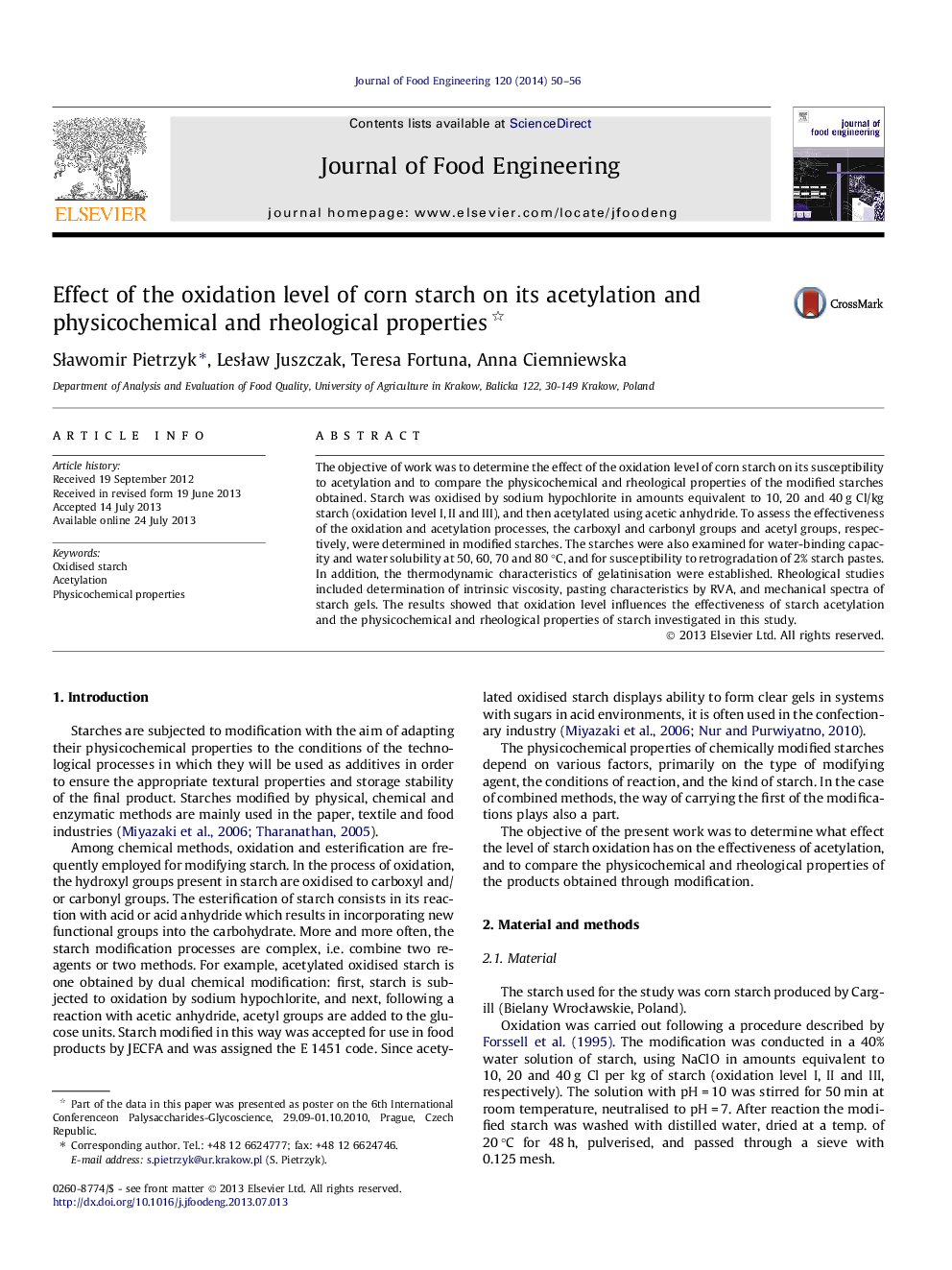| کد مقاله | کد نشریه | سال انتشار | مقاله انگلیسی | نسخه تمام متن |
|---|---|---|---|---|
| 223309 | 464351 | 2014 | 7 صفحه PDF | دانلود رایگان |
• Effect of the oxidation level of starch on its acetylation and physicochemical properties.
• Oxidation level influences the effectiveness of starch acetylation.
• Acetylation of the oxidised starch decreased ability to form gel structure.
• Acetylation of the oxidised starch reduced susceptibility to retrogradation.
The objective of work was to determine the effect of the oxidation level of corn starch on its susceptibility to acetylation and to compare the physicochemical and rheological properties of the modified starches obtained. Starch was oxidised by sodium hypochlorite in amounts equivalent to 10, 20 and 40 g Cl/kg starch (oxidation level I, II and III), and then acetylated using acetic anhydride. To assess the effectiveness of the oxidation and acetylation processes, the carboxyl and carbonyl groups and acetyl groups, respectively, were determined in modified starches. The starches were also examined for water-binding capacity and water solubility at 50, 60, 70 and 80 °C, and for susceptibility to retrogradation of 2% starch pastes. In addition, the thermodynamic characteristics of gelatinisation were established. Rheological studies included determination of intrinsic viscosity, pasting characteristics by RVA, and mechanical spectra of starch gels. The results showed that oxidation level influences the effectiveness of starch acetylation and the physicochemical and rheological properties of starch investigated in this study.
Journal: Journal of Food Engineering - Volume 120, January 2014, Pages 50–56
